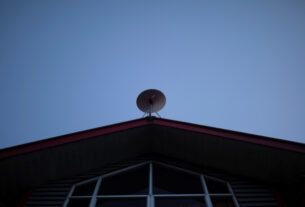At 5:40 am on Friday morning, history took place as the Tel Aviv Light Rail began operating for the first time.
An estimated 234,000 passengers are expected to ride the rail daily on the Red Line, which spans 24 km. Once up and running fully, the light rail is expected to connect Petah Tikva to Bat Yam via 34 stations through Bnei Brak, Ramat Gan, and Tel Aviv-Jaffa, making the Tel Aviv area accessible from the suburbs and hopefully alleviating the horrendous traffic.
Though most stations are above ground, 10 of them will be underground.
The government mass transit agency NTA oversaw the construction of the line, with the Tevel company being directly responsible for the construction.
According to Tel Aviv Mayor Ron Huldai, who has spearheaded the project since its inception, the light rail represents a landmark in the history of Israel and of Tel Aviv.
“This is a true revolution…. In six years the city will be networked with 64 stations, meaning there will be a train station within 500 meters of every person in the city. This will be a different city in every respect. But it’s hard for people to imagine what is going to happen to the city, and things happen very slowly,” he recently told Globes.
Israel’s most expensive infrastructure project to date
Initially estimated to cost NIS 10.7 billion, the nation’s most expensive infrastructure project to date incurred costs that soared above the estimates.
At a final cost of some NIS 18.8b. and after more than eight years of construction, numerous delays, road closures, and untold hardships for local businesses, the long-touted rail network has been contentious, and for a variety of reasons remains controversial even as the launch takes place.
Excess cost associated with the project can be tied to an assortment of factors. While the physical construction incurred its own material-related costs, the cost of labor added a significant sum to the overall cost. Contractors required higher compensation not only due to the cost of living and the nature of the job, but they also required interest payments, according to data provided by NTA. Construction delays also contributed to the increase in cost.
Tel Aviv’s light rail construction costs soared above those of some of its international counterparts, according to a 2022 report by the State Comptroller’s Office. However, similar projects in regions like the Far East incurred fewer costs and had faster project turnarounds due to fewer regulations in the region, Avi First, the spokesman for NTA, divulged.
First shared some of the additional problems that not only halted the progression of the project but increased the price tag. “For one, those running the project thought that construction was at the heart of the matter. It’s not, though. The heart of the project was really about the system that it runs on and its integration,” First told The Jerusalem Post.
First also reflected on the difficulties of communication between the communities along the Red Line.
“Part of why the project was delayed and incurred additional costs was because it deals with five separate municipalities,” he said. “Every municipality is looking out for their own best interests, and they all want something different. Some of them wanted bridges built, others wanted gardens along the way… plus, different municipalities denied papers [i.e., permits], leading to a loss of money,” First stated. “If Tel Aviv had been removed from this project, there would have been more freedom for the project, but that’s not the reality of the situation.”
On the right track? Light rail’s launch gets mixed feedback
REGARDLESS OF THE cost, the new commuter line has received a range of mixed feedback from Tel Aviv’s residents and businesses alike. Since the project began in 2015, Tel Avivians and many of their favorite shops and restaurants have watched as the city transformed how they could get from point A to point B, yet the project’s disruption of the city’s ebb and flow has led some to question the costs and benefits of having the light rail at their disposal.
Tel Aviv’s shopkeepers have experienced significant damage to their business operations, reporting detrimental effects to their generated profit as a result. Specifically, these are businesses that are directly blocked by construction – and have been for years.
Ben Mishkit, a tattoo artist at John Boy Tattoo on the corner of Arlosoroff and Dizengoff streets, has seen the impact of the project for years – long before starting to work at the shop. Growing up closer to the Jaffa portion of the Red Line, he’d seen the impact of the project in the community he grew up in, and now in his place of work.
“This shop opened seven years ago, and I’ve been here for a few years, but we’ve been dealing with light rail construction for the last three years,” he told the Post. “We’re a tattoo shop, so we really are reliant on foot traffic. It’s damaged our profits and our ability to draw in new business,” he said.
Mishkit added that the shop has multiple other locations, further north on Dizengoff Street. “Those other shops are newer and not near light rail construction, but this shop has had a blockade relating to the project directly in front of our shop for the past three years. There’s no clear end in sight, and it’s really caused a problem for us.”
In the center of the city, businesses on Allenby Street have suffered a similar fate. Allenby Street will be the home of both part of the Red Line as well as the Purple Line, whose construction began only recently, and which is due to open in 2027. Hamalabiya, a café and bar just off of the Carmel Market on Allenby Street, has reported seeing significant damage to its profits – a whopping 40% decrease since the construction began.
Avi Avital, the owner of Hamalabiya’s branches (including in the Jaffa flea market, Florentin, and Ibn Gvirol, in addition to locations in Givatayim and Kfar Saba), expressed the pain and frustration that comes with the project for a business owner directly affected.
“All of the businesses near me are also suffering. There are fewer people coming at night because it’s not comfortable to walk on Allenby now. We used to be the soul of Tel Aviv, and it was one of our best locations, but it became incredibly uncomfortable to walk on,” he said. “Plus, no one is helping us at all – no one from city hall is helping.”
Avital added that taxes and operation costs have remained the same, and that the business continues to pay the city’s high taxes despite a massive decrease in profit. “There are already tons of problems with the economy in Israel in general, post-COVID. Plus, now there are all of the problems with the government, and prices have increased, and yet in the last four or five years, we have struggled to keep this branch afloat.”
Similarly, Tel Aviv’s residents seem less than enthusiastic about the opening of the light rail, simply because of how disruptive it has been.
Ben Brookarsh, 28, moved from near Dizengoff Center to Ben-Yehuda Street and noticed an immediate difference due to construction.
“They’re working all night long – that’s got to be illegal, right?” he asked the Post.
“In addition to not sleeping, thanks to construction, it feels like it’s going to lead to further gentrification of the city. It’s killing the Carmel Market, tons of shops and restaurants are going to suffer. When the project is done, big businesses will probably move in and create a completely different environment,” he added.
However, as frustrated as he is by the process, he’s planning to use the rail. “I do like riding new trains, though, so I’ll look forward to that.”
Perri Finkelstein, 32, has lived on Allenby Street for the last three years and told the Post that she’s noticed that “there isn’t much progress made, until there is. I have a lot of strong feelings about the construction. Weeks will go by without noticing any improvement really. I’m just really concerned that with the rest of Allenby being closed now, there will be months and months, even years, of people just sitting around looking like they’re doing nothing.
“The noise, the dirt, the dust – I might not stay on Allenby,” she added.
Finkelstein noted that there is certainly less foot traffic around the clock, and that she’s not optimistic about how the businesses will survive.
“The light rail must also operate and serve the public on weekends, as is fitting in a liberal and democratic country. As someone who supports and promotes transportation on Shabbat, I have been saying for a long time: the light rail must operate and serve the public even on Shabbat.”
Ron Huldai
The Tel Aviv light rail’s Shabbat conundrum
ON WEDNESDAY, Transportation Minister Miri Regev led media invitees on a preview of the rail line and the terminals. Putting aside the expected technical glitches of some gates and train doors not working, the event magnified issues that are dousing some of the enthusiasm for what should be a celebratory milestone in Israel’s history.
The rail will not operate on Shabbat or holidays, despite Tel Aviv being a city that operates several different Shabbat bus lines throughout its city lines. According to a survey conducted by Hiddush for Religious Freedom and Equality, there is widespread support for the operation of the rail on weekends.
“We will maintain our status quo as a Jewish state even on the light rail,” Regev said on the media tour.
Huldai announced he was not going to attend an official opening ceremony on Thursday in Petah Tikva, as a protest against the train not operating on Shabbat, but that he would be one of the first riders on Friday morning.
“The opening of the light rail is a historic and important event, an event that I have waited 23 years for this to happen,” said Huldai this week.
“This is my protest,” he said in a video statement. “The light rail must also operate and serve the public on weekends, as is fitting in a liberal and democratic country. As someone who supports and promotes transportation on Shabbat, I have been saying for a long time: the light rail must operate and serve the public even on Shabbat.”
Tel Aviv’s newest line of transportation may be creating division in its infancy, but, as residents of Jerusalem discovered, the light rail will soon become part of the city’s fabric. There will be plenty of teething troubles, including breakdowns and overcrowding, but like in Jerusalem, the light rail will soon become a ubiquitous landmark in Tel Aviv.
Even if Tel Avivians don’t seem to think the project was worth the cost or aggravation, it’s unlikely that this will stop them from riding the rail. One way or another, the city will never be the same. •




